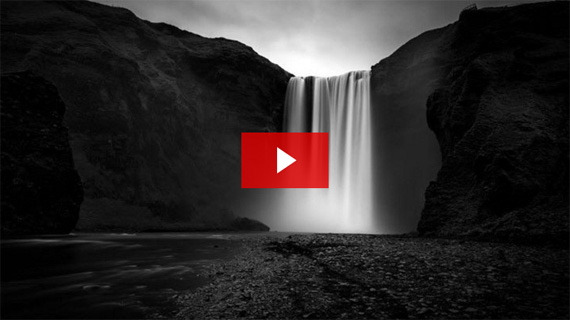Related note: deal ending soon for The Better Black & White Guide at 70% Off
Learn self-expression and interpretation using these black and white photography techniques.

Photo by auclairde; ISO 800, f/1.4, 1/180-second exposure.
This is not to say that the same learning process is not offered in color or digital photography, but by removing the color from your images, you take them one step from the depiction as a simple likeness. They are not unlike the world we see it around us. This is where knowing a bit about composition and the elements of photography come in. You are in essence designing your images. The black and white photography techniques outlined here will help you create some amazing pictures.
First, I must say that it does not matter whether the photo is black and white or color, digital or traditional. The success of the image depends on the photographer’s aesthetic sensitivity to capture the nature of the subject, his or her perception, vision, and imagination.
The Rule of Thirds
One important design element in black white photography technique is the use of the rule of thirds. This means that you want to position your subject into one third of the viewfinder, either vertically or horizontally. Stay away from centering your subject. This technique will help to create balance as well as focus on the important information in the frame.
Framing Your Image
Framing the image well is another important black and white photography techniques. Make sure that you fill your frame well with the subject matter. For example, if your subject is a candle sitting on a table in a room, get close to the candle. Using a large aperture and focusing sharply on the candle will blur out the rest of the room, which is not where you want to direct the viewer’s attention.
Your technical ability to select the best aperture and shutter speed, the most appropriate viewpoint, and focal length and the right moment to release the shutter is something that you will need to give plenty of practice.
Keep in mind your intention. In other words, what is the point of the photo? What do you want the viewer to understand or recognize? What is the story you are telling, visually? Practice using your aperture and shutter speed to make the image come out as you have intended. This is not a time to have your camera on auto settings. You will need to use the manual settings in order to have the control you will need.

Photo by Breadless-Arts; ISO 125, f/5.6, 1/1250-second exposure.
Taking Control
It’s important that you take control. Learn how to use your camera properly. Whether you’re shooting film and end up in the darkroom or using a digital camera and computer, you need to be in control from the negative to the computer output. This way you are able to manipulate the tonal range yourself, including the shades of grey between black and white.
More Techniques to Keep the Viewer’s Attention
When color is not involved in a photograph, you need to play up other details help keep the viewer’s interest. These are some examples:
Play Up Texture. Surface texture gives you the sense that the picture you’re looking at has a tactile quality. It helps you imagine what it would be like if you could reach out and touch what is depicted.
Lead the Eye. Lead your viewer’s eye by linking the subject with lines occurring naturally in the scene, such as a flight of stairs leading to something you wish to stress.
Frame the Subject. Strengthening the photograph can be as simple as choosing a camera angle that shows the main subject framed by other elements of the composition. Often times, all you need to do is shift your camera position until the subject aligns properly when seen through the camera’s viewfinder.

Photo by Zlatko Vickovic; ISO 100, f/6.3, 1/160-second exposure.
When implementing these black and white photography techniques, try grasping just one or two at a time. You will see how each one will make your photographs ‘pop’ in a unexpected and unique way. Happy shooting.
About the Author
Mary E. Foster, MFA, is a professional photographic artist and educator (www.photography-tips-and-resources.com). She enjoys teaching as well as working with all aspects of photography, from developing film and making black and white prints in her darkroom to shooting digital imagery and editing it on the computer.
For Help with B&W Editing, Deal Ending Soon:
Have you ever quickly converted your shots to black & white, hoping to make them “Better”? And the result was bland to say the least? This is a very common occurrence. Knowing how to convert color to B&W with a working understanding of tone and contrast in post-processing is a very different story. This in-depth eBook is designed to cover EVERYTHING you need to know about producing your own powerful and professional B&W images.
Every step is detailed in all three programs: Photoshop, Lightroom, & Elements. But even if you don’t have these applications, there’s enough information in here to help you achieve the same results with the software you already have. We were able to negotiate a 70% discount for our readers which ends soon (only $ 9).
Deal found here: The Better Black & White Photography Guide at 70% Off
Go to full article: Black and White Picture Techniques
What are your thoughts on this article? Join the discussion on Facebook
PictureCorrect subscribers can also learn more today with our #1 bestseller: The Photography Tutorial eBook
The post Black and White Picture Techniques appeared first on PictureCorrect.
